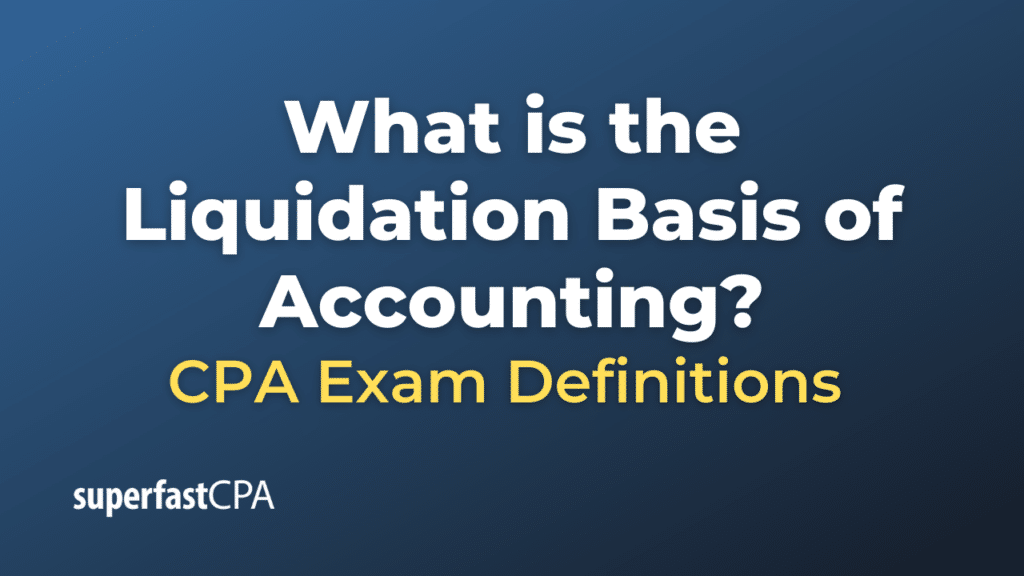Liquidation Basis of Accounting
The Liquidation Basis of Accounting is a method of accounting that a company adopts when it is nearing the end of its life and is about to be liquidated. This method is used when liquidation is imminent, meaning it is highly likely that the company will soon cease its operations and its assets will be sold off to pay its obligations.
Under the liquidation basis of accounting, a company reports its net assets as being equal to the amount of estimated cash or other considerations that it expects to collect as a result of the liquidation process.
The main components of the liquidation basis of accounting include:
- Measurement of Assets: Assets are reported at their estimated net realizable values, which is the estimated amount that a company expects to collect from the sale of the assets during the liquidation process.
- Recognition of Liabilities: All existing liabilities and obligations that are expected to arise during the process of liquidation are recognized and measured at their expected settlement amounts.
- Presentation and Disclosure: The company is required to present a statement of net assets in liquidation and a statement of changes in net assets in liquidation. The company must also disclose the plan of liquidation and the methods and significant assumptions used to measure assets and liabilities.
The liquidation basis of accounting is a significant departure from the going concern basis of accounting, which assumes that a company will continue its operations indefinitely. This method provides more relevant financial information to stakeholders during the liquidation process, as it focuses on the values that the company’s assets and liabilities are expected to realize during the liquidation process.
Example of the Liquidation Basis of Accounting
Imagine there’s a company, XYZ Corp, which is in the process of liquidation due to financial distress. As per the liquidation basis of accounting:
- Measurement of Assets: XYZ Corp assesses its remaining assets. These include buildings, inventory, and office equipment. After evaluation, they estimate they can sell these assets for a total of $500,000.
- Recognition of Liabilities: XYZ Corp owes $300,000 to its creditors, including banks and suppliers. It also expects additional expenses of $50,000 related to the costs of liquidation, such as legal fees, auction costs, etc.
- Presentation and Disclosure: Under the liquidation basis of accounting, XYZ Corp will prepare a statement of net assets in liquidation. After accounting for all liabilities and liquidation costs, XYZ Corp estimates its net assets to be $150,000 ($500,000 – $300,000 – $50,000).
XYZ Corp also prepares a statement of changes in net assets in liquidation. This would include the proceeds from asset sales, payments of liabilities, and other transactions affecting the company’s net assets in liquidation.
- Distribution: If XYZ Corp has 150,000 outstanding shares, each share would be entitled to $1 from the liquidation proceeds ($150,000 / 150,000 shares).
Remember, this is a highly simplified example. In a real-world scenario, the process of liquidation can be complex, and the liquidation basis of accounting must be applied carefully, in compliance with accounting standards and regulations. The guidance of professional accountants or a court-appointed liquidator is often necessary.













